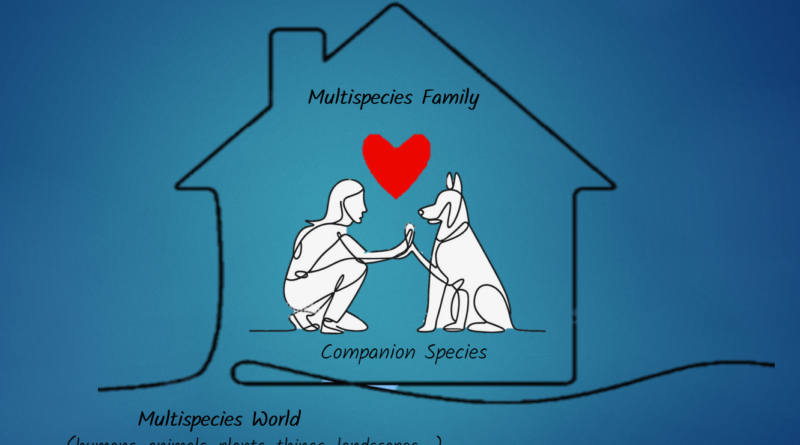The Emotional and Informational Lives of More-than-Humans
Living with other species isn’t just about companionship; it involves deep informational connections. Love plays a central role, helping humans and non-human animals understand and care for each other. It helps create meaningful information through daily interactions. Misunderstanding these connections can lead to problems, especially for the animals who have less power in this relationship.
—In multispecies families, information is everywhere, from basic needs to shared joy—
In multispecies families, information is everywhere, from basic needs to shared joy. Information is not just words, texts, and things but also includes feelings, behaviors, and shared experiences. It weaves through their shared lives, shaping their interactions and understanding. Their mutual understanding is a form of information exchange, where feelings are shared and responded to. This understanding, shaped by and shaping information, is experienced through attention to senses and materials shared between companion species, observing behaviors, and respecting each other’s individuality.
 I used an informational perspective to study such families in New Zealand, focusing on understanding information experiences from the participants’ perspectives—humans, cats, and dogs. The approach of “information experience” considers how beings (humans and animals) find meaning in their interactions. It helps to see both humans and animals as information users and providers, creating a shared (informational) world.
I used an informational perspective to study such families in New Zealand, focusing on understanding information experiences from the participants’ perspectives—humans, cats, and dogs. The approach of “information experience” considers how beings (humans and animals) find meaning in their interactions. It helps to see both humans and animals as information users and providers, creating a shared (informational) world.
Humans, cats, and dogs create a shared life within their multispecies family, full of meaningful information. Let me explain some of these elements, where information is found in familiar forms within the emotionally connected lives of multispecies families.
- The Home: Humans and non-human animals communicate emotions and information through their shared environment. Simple and banal moments, such as greetings at the entrance doors, spending time in home offices, or sleeping together on beds, are powerful expressions of love and joy that enhance the bond between them. Sensory and material things within a home, like sunlight through a window or the warmth of a bed, evoke feelings of happiness and comfort, enhancing the informational connection between humans and their animals and deeply affecting their understanding of each other.
- Feel My Pain, Feel My Joy: Humans and non-human animals learn to understand each other’s emotions, like pain and joy, through close observation and interaction. Without a shared language, humans, cats, and dogs rely on observing behaviors and bodies to understand each other’s feelings. Positive interactions, whether through comfort during illness or joyful greetings at the door, enrich the lives of humans, cats, and dogs. This is why separation can be tough for animals, just as it is for their humans, highlighting the deep affective information woven within multispecies families.
- Let Me Be in My Being: Understanding and respecting each other’s autonomy and individuality is vital information that is learnt through living with others (humans, cats, and dogs). By observing, imitating, and considering animals’ preferences, humans and animals create a meaningful shared life together where every party feels valued. This understanding enriches their relationships, enabling both humans and animals to flourish in their own unique ways.
Multispecies families, humans who live harmoniously with other companion species, underscore the significance of paying attention to information that fosters empathy and understanding, thereby shaping a balanced and enriched world that includes more than just humans. By understanding and respecting the emotional and informational needs of all involved parties, we can cultivate more compassionate and inclusive environments, not only within homes but also in places such as cities, libraries, and other community spaces.
I have recently written more extensively about all this in my papers “The Red Thread of Information Across More-than-Human Love” (Journal of Librarianship and Information Science, https://doi.org/10.1177/09610006241255418) and in “The In-Between: Information Experience within Human-Companion Animal Living Environments” ( Journal of Documentation, https://doi.org/10.1108/JD-08-2023-0160).
Image credit: Multispecies families. Copyright 2024: Niloofar Solhjoo.
Cite this article in APA as: Sohjoo, N. The emotional and informational lives of more-than-humans. (2024, July 2). Information Matters, Vol. 4, Issue 7. https://informationmatters.org/2024/07/the-emotional-and-informational-lives-of-more-than-humans/
Author
-
Niloofar Solhjoo is an independent researcher originally from Iran, a pioneer of multispecies perspectives in LIS research.
View all posts





